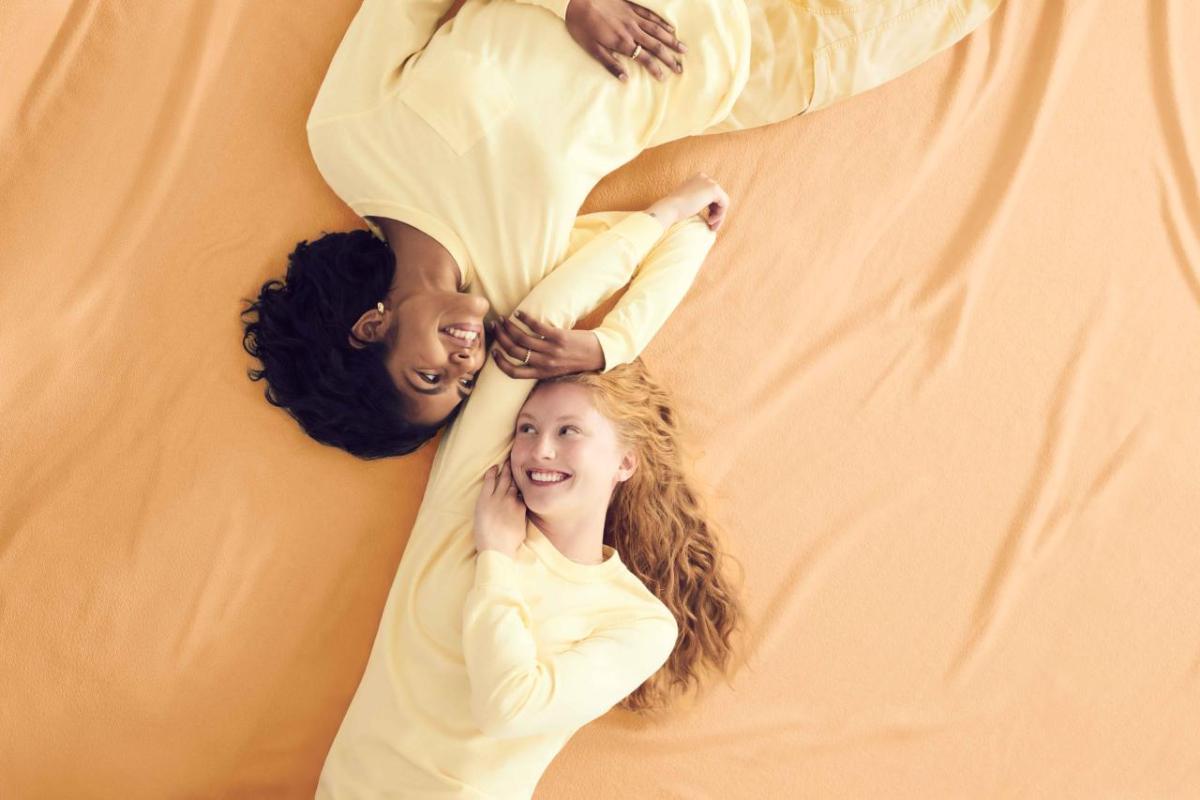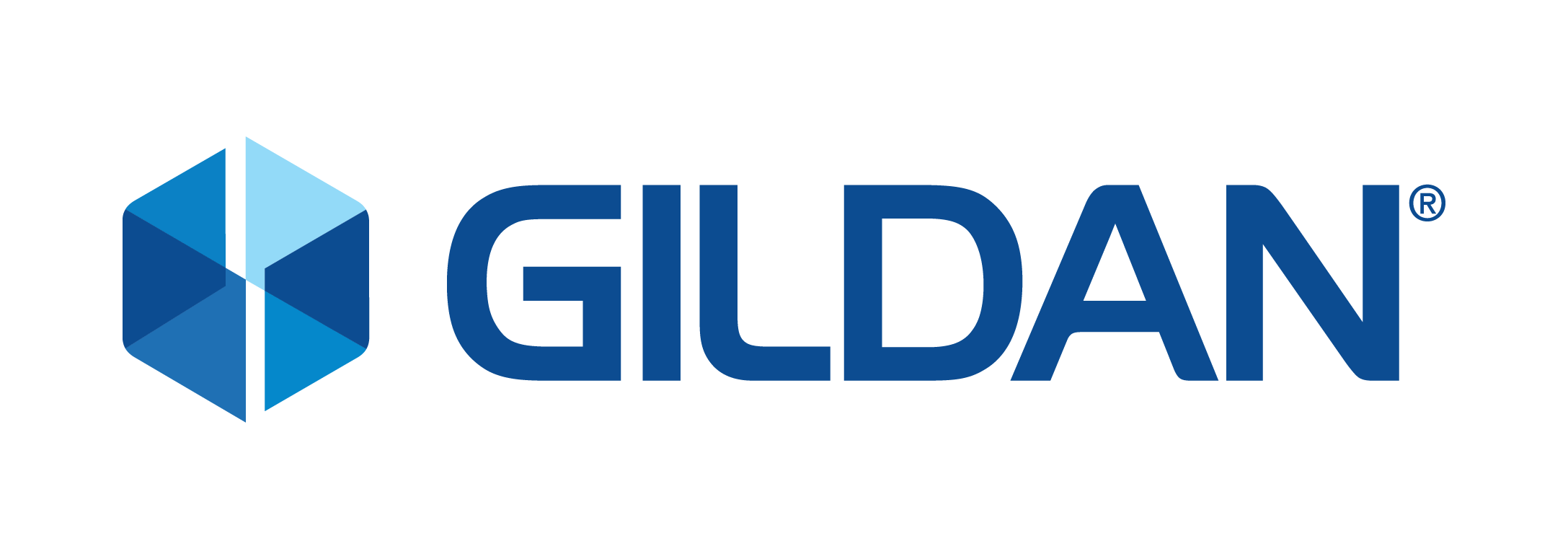A Look Into Comfort Colors’® Pigment Pure™ Dyeing Process With Product and Textile Leaders

Comfort Colors’® proprietary dyeing process, Pigment Pure™, made an exciting new debut at the Impressions Expo last week. Dyeing is known to be a water-intensive step in apparel making, and Pigment Pure™ is a solution tackling just that by reducing water and energy use during the manufacturing process.
We sat down with Kevin Freeman, Vice-President of Product Merchandising and Development and Maria Frohmader, Vice-President of Textiles and Dyeing at Gildan Activewear (owner of Comfort Colors®), to better understand the dyeing process, and learn about some of its sustainability attributes.
Can you start by telling us a bit more about Comfort Colors®?
Kevin: Comfort Colors® is our lifestyle brand, known for the softness of its materials, as well as the comfort that comes from using 100% ring-spun U.S. cotton. Comfort Colors® t-shirts are wardrobe staples that are known for radiating positivity or “Spreading Good Vibes” as we say.
This brand is extremely popular among our consumers for its nature-inspired hues, something which has become a unique selling point for it. Of course, this means that dyeing plays an important role in producing these well-loved colours.
Can you walk us through the Pigment Pure™ method?
Maria: A common dyeing method used for cotton in our industry is known as reactive dyeing which is where the dye forms a bond with the fibre. Pigment Pure™, however, dyes fabric on a surface level, allowing us to produce subtle, vintage-looking colours, and ultimately maintain the nature-inspired shades for which the brand is known.
This method uses a set palette of base colours which are mixed and matched to produce the vast array of shades we have in our product line. In addition, it allows us to maintain shade consistency, has incredible attributes for printability, and even reduces chemical discharge.
Kevin: What’s exciting about Pigment Pure™ is that beyond its ability to produce beautiful fabric, it has interesting environmental and manufacturing advantages. For instance, when compared to reactive dyeing, the dyeing time is reduced by approximately 40% with Pigment Pure™, allowing us to save on both water and energy, and making Comfort Colors® t-shirts a great lower-impact choice.1
1. The data on the Pigment Pure™ process are based on approximate comparisons with conventional reactive dyeing.
How did you go about developing this dyeing method?
Maria: We are consistently searching for new ways to optimize our manufacturing process, looking at every stage of production to find new or more efficient techniques in making our apparel. Pigment Pure™ was brought to life after years of research and development and continuously optimizing the process.
What’s great about this method is that it improves the dyeing process from three angles – conserving resources, saving time, and enhancing the performance of our end products. So, it’s a win-win from an environmental, manufacturing, and product standpoint!
What are some environmental benefits of Pigment Pure™?
Maria: Dyeing is traditionally one of the most water-intensive processes in the clothing production cycle. At Gildan, we are always looking for ways to reduce our impact on the environment, and Pigment Pure™ is a perfect example of that as it uses on average three times less water and consumes less energy which in turn reduces our emissions footprint.1 It also supports our Climate, Energy, and Water targets established as part of our Next Generation ESG strategy, where we committed to reducing water withdrawal from nature by 20% by 2030 (compared to a 2018 baseline), as well reducing our absolute Scope 12 and 23 GHG emissions by 30% by 2030 (compared to a 2018 baseline).
1. The data on the Pigment Pure™ process are based on approximate comparisons with conventional reactive dyeing.
2. Scope 1 refers to direct emissions resulting from fuels used for stationary and mobile combustion across Gildan-operated facilities.
3. Scope 2 refers to emissions resulting from Gildan’s purchase of electricity.
What exciting doors has Pigment Pure™ opened for you?
Kevin: For us, the best part was the plethora of prospects that Pigment Pure™ offered and continues to offer us. For instance, experimenting with Pigment Pure™ allowed us to develop our Color Blast product line. Color Blast is a collection of gorgeous tie dye looking t-shirts. It’s a beautiful product line that helps us differentiate ourselves from our basic blank t-shirts and has allowed us to reach new customers.
What is some of the customer feedback you’ve received from this process?
Kevin: We receive overwhelmingly positive feedback on our Comfort Colors® products due to the enhanced performance of the t-shirts. As mentioned earlier, Pigment Pure™ helps us achieve the perfect vintage shades that customers love, a soft and comfortable feel which increases wearability, as well as improved attributes for printability. Most importantly, our customers care about the environmental benefits of Pigment Pure™, truly making Comfort Colors® a well-loved brand.
To learn more about Comfort Colors®, click here.

